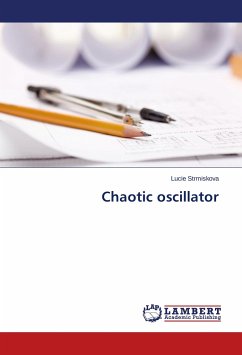High Quality Content by WIKIPEDIA articles! In dynamics, the van der Pol oscillator is a non-conservative oscillator with non-linear damping. It evolves in time according to the second order differential equation: {d^2x over dt^2}-mu(1-x^2){dx over dt}+x= 0 where x is the position coordinate which is a function of the time t, and is a scalar parameter indicating the nonlinearity and the strength of the damping.The van der Pol oscillator was originally proposed by the Dutch electrical engineer and physicist Balthasar van der Pol whilst he was working at Philips. Van der Pol found stable oscillations, which he called relaxation-oscillations and are now known as limit cycles, in electrical circuits employing vacuum tubes. When these circuits were driven near the limit cycle they become entrained, i.e. the driving signal pulls the current along with it.
Bitte wählen Sie Ihr Anliegen aus.
Rechnungen
Retourenschein anfordern
Bestellstatus
Storno








